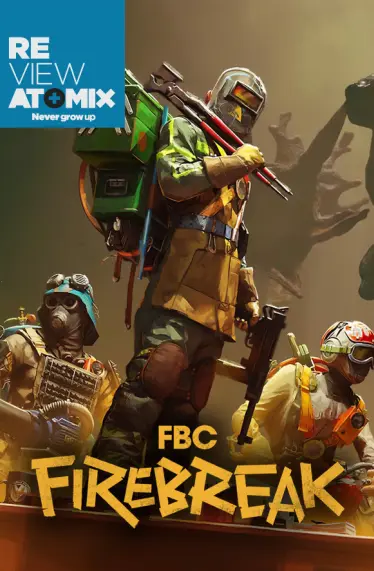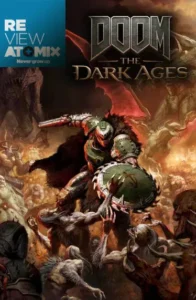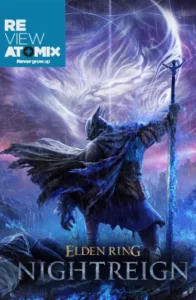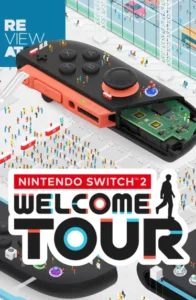Firebreak FBC: A Critical Examination
Below is a rewritten version of the provided text:
A Bold Experiment and Proposal
Remedy Entertainment has long been associated with deep narrative experiences, rich in symbolism and filled with protagonists defined by trauma and mystery. From Max Payne to Alan Wake II, the studio has cultivated a distinct identity. Therefore, when they announced FBC: Firebreak, a cooperative multiplayer shooter set in the Control universe, the announcement was met with surprise. A PvE game with a governmental office aesthetic featuring paranormal anomalies but without a central narrative? It sounded risky yet intriguing. Rather than continuing with protagonists wielding supernatural powers facing existential dilemmas, Firebreak casts players as maintenance employees. Yes, literally maintenance workers from the Department of Fire and Cleaning, armed with industrial tools and crisis kits, tasked with containing paranormal threats within the Oldest House.
The tone shifts from psychological suspense to functional absurdity. While the atmosphere remains eerie, the focus is lighter, more direct, more bureaucratic. From its first trailer, Firebreak made it clear it wasn’t aiming to be a sequel to Control but rather a reinterpretation of its universe from a different perspective. This choice raises a key question: Can a multiplayer game, without linear narrative or a defined protagonist, capture the essence of a world as rich in symbolism as the FBC? Returning to the Oldest House feels like reuniting with an old friend who has changed their mood. The brutalist architecture, reconfiguring hallways, and spaces defying logic remain, but they no longer serve an introspective narrative. Instead, they facilitate a more functional cooperative experience. Firebreak cleverly reuses Control’s visual assets, elevating them beyond symbols of trauma or power, to become work settings instead. The House remains alive, but now it is more of an operational field than a mystery to unravel. While the story is set after the events of Control, there is no clear narrative continuity. Jesse Faden is absent, and the previous game’s events are barely mentioned.
Instead, Firebreak opts for environmental and fragmented storytelling, with documents, recordings, and internal dialogues providing clues about the current state of the FBC. This decision might frustrate those expecting lore expansion but also allows new players to join without feeling lost. One intriguing success is its tone, embracing institutional absurdity wholeheartedly: from murderous post-it notes to possessed ovens, all infused with a dry, bureaucratic humor reminiscent of The Office with a paranormal twist. Managers give orders via radio, requisition forms, and internal staff messages create a unique atmosphere that blends the supernatural with the administrative. This approach brings freshness and reinforces the identity of the FBC universe as a place where the inexplicable is managed with protocols and sarcasm.
Varied but Limited Gameplay
FBC: Firebreak is built on a solid cooperative foundation, designed for teams of three players who must collaborate closely to complete tasks within the Oldest House. Each mission, termed a “Job,” features a main objective (like sealing a possessed furnace or eliminating deadly post-its) and secondary tasks requiring coordination. The setup is simple: select a job, choose a crisis kit, and dive into the chaos. While missions are relatively short, their intensity and fast pace make them perfect for dynamic gaming sessions. The variety of jobs available at launch is limited (five main missions), but each introduces unique mechanics. For instance, in “Paper Chase,” participants must destroy living sticky notes while avoiding ambushes by entities camouflaged among documents.
In “Hot Fix,” the team must repair heat fans before a thermal anomaly consumes the sector. Though simple in concept, these tasks become complex due to the need for role synchronization and constant environmental pressure. Despite their functional design, missions can become monotonous after several repetitions. The lack of random events or narrative branches makes the gameplay loop feel predictable. Remedy has promised to add more jobs in future updates, but in its current state, the game heavily relies on its core mechanics’ charisma to maintain long-term interest. The gameplay’s heart lies in “crisis kits,” which act as specialized classes. There are three available: the Fix Kit (repair), the Splash Kit (cleaning), and the Jump Kit (electricity and mobility). Each comes with a primary tool, an upgrade, and a support item. For example, the Fix Kit can deploy auto-turrets and repair machinery, while the Splash Kit can release water jets that cleanse surfaces and weaken enemies.
The synergy between kits is vital; a player with the Splash Kit can soak enemies, allowing the Jump Kit to electrocute them more effectively. This interdependency promotes constant communication and tactical planning. Teams often improvise strategies on the fly, such as using sound distractions to lure enemies into electrical traps. This dynamic is reminiscent of games like Deep Rock Galactic or Helldivers 2, where success depends more on teamwork than individual skill. However, the depth of kits is limited. Customization exists but does not reach the complexity of other cooperative shooters. Enemies in Firebreak are varied in design but less so in behavior. From floating post-its to regenerating astral masses, the bestiary is visually creative, although its AI tends to be predictable. Most creatures attack in waves, prioritizing numerical pressure over strategy.
This results in fun chaotic moments but can also make combat feel flat after several repetitions. Difficulty adjusts based on the number of players and the threat level selected before each mission. In higher levels, enemies are more aggressive, anomalies more unstable, and mistakes more costly. Here the game shines, forcing teams to improvise, divide tasks, and make decisions under pressure. Unfortunately, at lower difficulties or when playing solo, much of the tension and dynamism is lost. The overall game pace is fast, with missions rarely exceeding 20 minutes. This makes it ideal for short sessions but limits the potential for building narrative arcs or more complex mechanics. Firebreak bets on immediacy, on “get in, clean, get out,” and while this works in many scenarios, it also leaves the impression that the game could offer more if it dared to slow down and deepen its systems.
Potential for Future Growth
FBC: Firebreak bets on a progression system based on “Requisitions,” functioning like thematic unlocking trees. Each requisition contains various items, from weapons and perks to cosmetics, unlocked by completing specific objectives. This structure is reminiscent of page-based progression systems in games like Battlefield 2042, but without microtransactions or battle passes. Everything is earned by playing, which is refreshing in a landscape saturated with aggressive monetization. However, progression can feel slow and unrewarding. Some key upgrades are locked behind challenge chains that require repeating missions under specific conditions, which can get tedious. Additionally, the “Lost Assets” system – the in-game currency for unlocking items – does not always reward proportionately to the effort invested. In its initial version, Firebreak offers five main missions, each with variants based on threat level and corruption modifiers, designed to be replayable with slightly changing objectives in each attempt. Unlike titles like Left 4 Dead or Deep Rock Galactic, where each session feels unique, here the repetition becomes evident after just a few hours.
The cosmetic content is also limited initially, although the Deluxe Edition includes exclusive elements like the “Firestarter” armor set, a golden shotgun skin, and two premium voice packs. Completing all missions across different difficulties can take between 10 to 15 hours, depending on the player’s pace. Remedy has confirmed a post-launch roadmap with two free major updates: Outbreak (Fall) and Blackout (Winter). The first will add a new mission set in the Research Sector, with new enemies, additional mechanics, and unlockable rewards. The second will bring another, yet unnamed scenario, new equipment, and more complex threats. Both updates aim to expand the experience without dividing the community. Additionally, all playable content will be free, while optional cosmetics will be available for purchase separately. This strategy aims to maintain interest without resorting to invasive live-service practices. In summary, Firebreak has a solid foundation but still needs to grow. Its progression system is functional but improvable, and its initial content, while attractive, isn’t enough to sustain long-term interest. The key will be how promised updates are implemented and whether they can turn this playable draft into a richer and more lasting experience.
The Power of Northlight Engine
FBC: Firebreak uses Remedy’s signature graphics engine, Northlight, the same that powered Control and Alan Wake II. This results in a robust visual presentation, with dynamic particle effects, volumetric lighting, and highly detailed environments. Although the game doesn’t reach Alan Wake II’s level of graphic sophistication, it maintains an aesthetic consistent with the FBC universe: breathing surfaces, deforming offices, and anomalies that elegantly distort space-time. The Oldest House remains a character in itself, with vivid textures and architecture defying logic. The sound design in Firebreak is subdued. The ambient music, composed by Petri Alanko, retains the ethereal and tense tone characteristic of the FBC universe. There aren’t memorable themes like “Take Control” from Control, but instead a soundscape that accompanies the action well. Sound effects from the hums of anomalies to the creaks of deadly post-its are meticulously designed to reinforce the sense of latent danger and shine when using headphones, a soundbar, or a home theater system. One intriguing aspect is the use of 3D audio on PlayStation 5 consoles, allowing for precise spatial threat localization. This proves particularly useful in missions where visibility is reduced or the environment is constantly changing. Conversely, the game lacks built-in voice or text chat, limiting communication in public matches.
Artistically, Firebreak maintains Control’s visual identity but adapts it to a more functional and operational tone. The Firebreakers’ makeshift uniforms, inspired by the Mad Max aesthetic, reflect the precariousness of a division operating with limited resources. The scenarios, although less varied than in Control, are full of details reinforcing the atmosphere: floating desks, self-opening file cabinets, and flickering lights in sync with corruption. Each mission features a specific color palette, aiding visual differentiation. Additionally, paranatural anomalies create unique visual effects like screen distortions, intentional glitches, and altered gravity fields, adding variety and surprise. Collectively, the technical and audiovisual aspects of FBC: Firebreak do not seek to dazzle with extreme realism but to build a coherent, functional, and stylized atmosphere. In that sense, they succeed admirably. It’s a game that looks and sounds like a part of the Remedy universe, albeit with its chaotic, gritty, and operational personality.
The Multiplayer That Aspired to be Control but Fell Short
FBC: Firebreak represents one of Remedy’s most daring moves in years. Shifting away from their narrative DNA to embrace a cooperative multiplayer format not only involves a genre change but also a design philosophy shift. In this regard, the game is a bold experiment, attempting to capture the essence of the FBC universe from a more lighthearted perspective, and while it delivers genuine moments of fun, it also highlights tensions between its conceptual ambition and practical execution. For those who enjoy light cooperative experiences with quick rounds and a distinctive aesthetic, Firebreak might be an attractive option. Its humorous tone, unique setting, and emphasis on collaboration set it apart from more conventional PvE shooters. Additionally, its technical accessibility and availability on services like Game Pass and PlayStation Plus make it a low-risk proposition for those looking to try something different. Conversely, for die-hard Remedy fans, the game might be disappointing. The lack of deep narrative, weak connection with Control’s events, and limited progression make Firebreak feel more like an appendix rather than a significant expansion of the FBC universe.
It’s worth emphasizing that it isn’t a bad game, but it is not one that leaves a lasting impression either. It is functional, entertaining in short sessions, but challenging to recommend as a lasting or transformative experience. Ultimately, FBC: Firebreak feels like an initial playable draft of something that could grow over time. Its base is solid: the atmosphere is strong, the cooperative mechanics work, and the institutional-paranormal tone remains captivating, but it requires more content, depth, and emotional connection. Remedy has promised free updates and evolution based on community feedback, opening the door for significant transformation, though its success is not guaranteed. For now, FBC: Firebreak is a spin-off that cleans but does not shine.














Post Comment